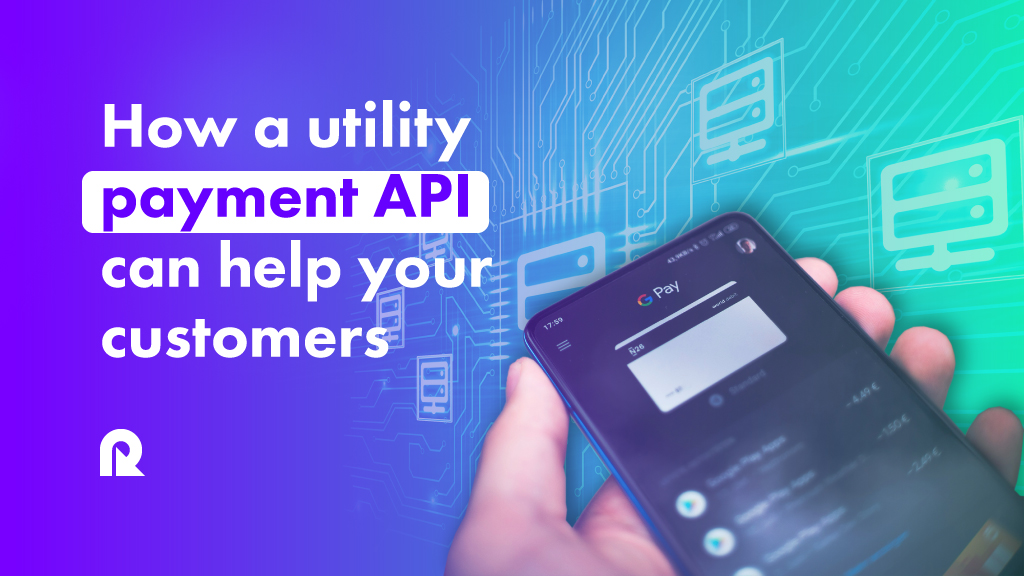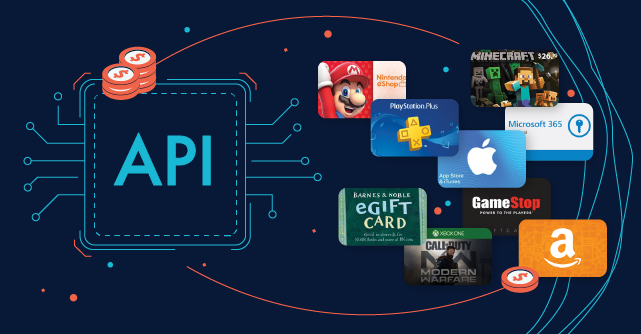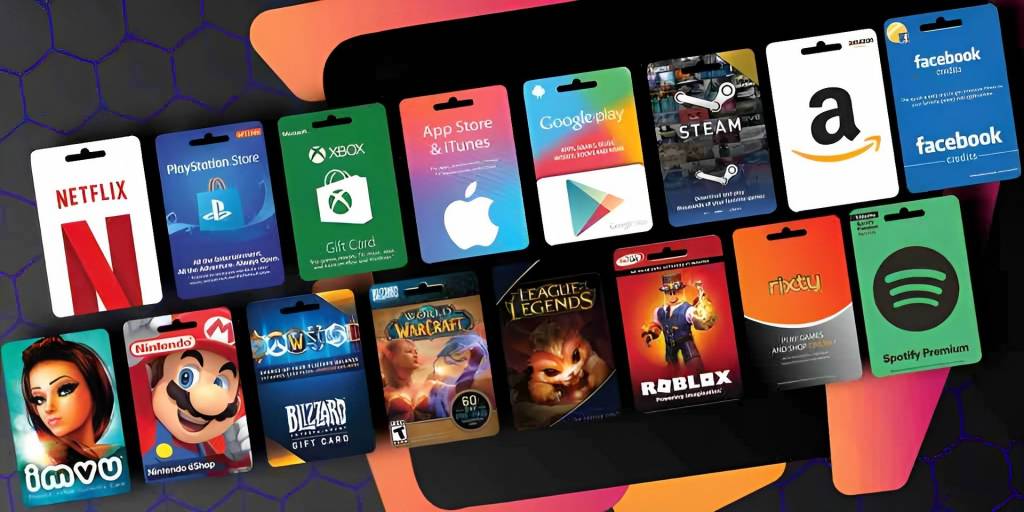By integrating a utility API into your mobile or web app, you can make utility payments seamless for your customers. Unlike other payments, troubles with paying utility bills can leave consumers lacking services crucial to their daily lives.
But what is a utility API?
This specific type of API allows users to pay their utility bills to multiple service providers from a single platform.
Different utility APIs provide various features and businesses who want to offer seamless utility payments to their customers must choose the one that is:
- Easy and quick to integrate
- Provides access to multiple service providers
- Allows timely utility bill payments
- Provides useful transaction reports and analytics
In what follows, we will highlight how utility API works, why you should consider integrating a utility API into your current system, and how you can choose the appropriate one. We’ll cover:
- How a utility payment API can help your customers
- How providing utility payment APIs can help your business
- What to look for in a utility payment API
- How to integrate Reloadly’s utility bill API
[Do you want to improve your customers’ lives by helping them pay utility bills more conveniently while also making more money? Sign up for Reloadly to easily and quickly install a utility payment API on your company’s mobile app or website.]
1. How a utility payment API can help your customers
Since utilities are crucial to the lifestyle of your customers, providing them with a single platform (or utility account) where they can track and pay them can offer the following benefits:
Seamless payments
Trying to pay the electricity bill through one portal and then the water bill through another can be so stressful.
With a utility API, you can provide a single platform on your web or mobile app where your customers can easily pay all bills from a single, central platform.
Providing this service can be especially helpful if you have customers in emerging economies where utility payment is still much more difficult for many people.
Reduces the likelihood of disconnection
In addition to the convenience this provides, it also makes it less likely that they will forget to pay their bills.
With prepaid utility APIs, they can prepay for services before they use them. By paying ahead, they can reduce the probability of being disconnected from a service.
Financial management
Having all their utility bills on one platform will also help customers understand how much they are paying for utility services in a month. This can help them improve their financial management.
Also, it can help avoid disconnection. Once they have their usage data and know the total cost of their utilities, they can budget that amount every month and prepay for them at the beginning of the month.
Furthermore, utility customers can monitor their usage and identify when they are stepping out of budget. For example, if $500 worth of electricity that lasts for 30 days starts lasting for only 25 days, it is easier to evaluate and identify what changed (by checking energy data) and what should be done about it (stop the leakage or accommodate it with a higher prepaid electricity budget).
2. How utility payment APIs can help your business
But what is in it for you as a business?
Highly profitability
When you install a prepaid utility API, you will have the opportunity to connect to a network of service providers that your customers use.
As the intermediary between your customers and service providers, you can make profits from the difference between the price (service tariff) the providers will charge you and what you will charge the customers.
Alternatively, the prices can be the same while you charge a fee on every bill payment on your platform.
A third option is to charge a monthly fee, which can be equal for all customers or be based on the volume or value of transactions.
Whatever pricing model you choose, there is an opportunity to make money by providing convenience to your customers.
New way to generate customers
Moreover, you can win new customers through this service. And if those customers find your utility payment service beneficial, what is stopping them from inquiring about your other services or you from upselling them?
Greater loyalty and retention
There is no better way to retain customers and make them loyal than to meet their needs. If you can meet their unspoken needs with a solution that they will instantly relate to, you are even more likely to retain them and make them loyal.
Extending your services to include utility payments can make them find you more valuable, increasing the likelihood that they will stay with you.
Seamless payment of bills
Businesses also have utility bills to pay since they also use electricity, water, gas, internet, and TV.
While you are providing seamless bill payments to your customers, you can benefit from the service yourself.
3. What to look for in a utility payment API
Enjoying all the benefits above depends on you meeting the needs of your customers. Doing so will require integrating the right utility API.
So, what should you look for in a utility payment API?
Easy and quick to integrate
As much as you want an API that provides many features, that should not come at the cost of the ease and speed of integration.
You should be able to integrate it quickly and without requiring external expertise.
Provides access to multiple service providers
When it comes to service providers, quality and quantity both matter.
Of course, you want to ensure that you provide access to the most popular providers. But there are some of your customers (and potential customers) who use service providers that may not be popular.
Also, you need an extensive network across various countries (especially emerging economies, where the need is great) so you can meet the needs of people wherever they are.
If your customers don’t find their preferred service providers, then the platform you create won’t be that beneficial to them.
Allows timely utility bill payments
Time is money, they say. Making utility payments convenient is one thing, making them timely is another.
While prepaid utility APIs make disconnection less probable, it is not improbable. Consider a household that uses $500 of prepaid electricity in 30 days but just exhausted it in 27 days because of higher energy usage during a friend’s visit.
In this emergency, they need a bill payment platform that is fast so they don’t remain in darkness. The utility API you integrate should have the capacity to process transactions in a few minutes to meet such emergencies.
Provides useful transaction reports and analytics
Transaction reports (billing summaries) can help with financial management. Users can use those reports to identify trends in their utility data, adjust their spending habits, or evaluate their budgets.
4. How to integrate Reloadly’s utility bill API
Reloadly’s utility bill payment API provides all these benefits and more.
You can integrate the API into your web and mobile apps in just a day without employing the services of any outsider. Our plugins can also be integrated with WordPress, Shopify, and WooCommerce.
We have a large network of service providers across Africa, Latin America, and Asia. Our extensive reach can help you meet the needs of your customers in emerging economies.
Furthermore, you and your customer can complete bill payments in 5 seconds from the comfort of a phone. We also provide data access, so you and your customers can understand your spending habits and better plan your finances.
So, how can you integrate this API into your system?
You can do this by following these simple steps:
1. Obtain access token
To get started, you will need to register an account with Reloadly.
When you sign in, you will get the client_id and client_secret keys that you will use to get access tokens. You can also find these keys by navigating to the Developers > API settings section.
Access tokens are needed for making API requests through our API endpoints and you can get them by making a request in cURL, as shown below:
Below is an example of a typical response you will get if your inputs are correct:
2. Get the details of all available billers
You can use the GET billers endpoint to obtain the details of billers.
You can filter through the list of all billers by using utility identifiers like ID number, name, type (electricity, water, gas), service type (prepaid or postpaid), ISO code (country code), page (page 1, 2, etc) and size (number of billers by page).
Below is an example of a request made through cURL:
Note that any of the query details you are not using to filter the list of billers should be set to zero. For example, this particular search is only filtering the list by “type” (electricity bill payment) so the others are set to zero.
Below is the first biller that appears in the JSON snippet that results from this search:
The list continues with all electricity bill service providers on the platform.
You can use this feature to search for all energy companies in a country (through ISO code), all prepaid service providers in a country, or all internet and TV service providers in a country. It all depends on what you are looking for.
3. Obtain the ID of your preferred biller
Once you have found the biller that matches your preferences, you can write down their ID for easier identification during payment.
In the example above, you will see that there are many other details available for each biller. For example, we can see that Ikeja Electricity Postpaid is in Nigeria, supports postpaid electricity bill payments, and permits international transactions. We can also see the minimum and maximum amount that can be paid, etc.
4. Pay bill
You can use the POST pay endpoint to start making payments on Reloadly.
The request on cURL will look like the following:
“SubscriberAccountNumber” is the account number that you or your customer has used to register an account with the service provider (it’s an alternative to the utility meter number). The “billerId” is the one you obtained in the previous step. “ReferenceID” is optional, you can use it to identify and differentiate various bill payments.
“useLocalAmount” is a query that shows whether you are paying in the local currency of the service provider. If yes, set it to “true” and if not, set it to “false.”
Once you have filled in all the details, a typical request will be as below:
The “id” is a unique identifier for this particular transaction. The other details are either self-explanatory or they come from the request you submitted.
5. Obtain transaction reports
You can access transaction reports through the GET transactions endpoint.
On the cURL, this request will look like the below:
The access token can be obtained through the same process as in step 1.
Once you have submitted the token, you can view the details of all the transactions you have made.
Below is an example of the kind of billing data available:
If you are interested in only a specific transaction, you can search for it through its ID (as seen below):
If you ever have any issues during the integration process, you can contact our customer support. They will answer all your questions and clarify any confusion. You can also check our docs page for more information.
[Are you ready to seamlessly pay your bills and also make money by providing a utility payment platform for your customers? Sign up for Reloadly for timely and convenient utility bill payments.]
Takeaways
- What is a utility payment API? It is an API that allows businesses to build platforms where they can help customers pay utility bills from a single, central account.
- Paying utility bills from a central platform is more convenient for customers. It also helps them better manage their finances while reducing the risk of disconnection.
- Businesses can also make a profit, gain new customers, and retain old ones by providing utility payments as a service.
- A good utility API will be easy and fast to integrate, provide access to multiple service providers, ensure timely payments, and furnish billing summaries to users.



